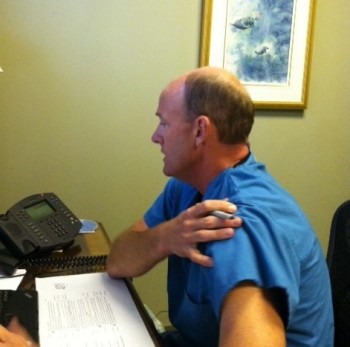 This week, Dr. Richard Kline of The Center for Natural Breast Reconstruction answers your questions.
This week, Dr. Richard Kline of The Center for Natural Breast Reconstruction answers your questions.
Q: I have been cancer free for 4 years, and have been very undecided about reconstruction. My surgery removed the underside of my right breast. I am very lumpy and the scar is very hard. Would I need to have a reduction in the other side or can the surgery site be repaired? I am “usually” a D in size currently. Also, is this surgery considered a “tummy tuck” type operation?
A: You have several potential options, depending on your present physical situation, and your wishes.
I’m assuming you are radiated (please correct me if I’m wrong). With this in mind, an implant to increase the size of the right breast is not likely to work. Increasing the size of the right breast with a DIEP flap (I assume this is what you meant by “tummy tuck”) is potentially a large operation for a lumpectomy defect, but sometimes it is actually the best option.
If you don’t mind being smaller than you were, reducing the size of the left breast may well be your best (and simplest) option to get better symmetry. That’s probably all I should try to say without knowing more details about your particular situation. We’d be happy to have our nurse Chris or PA Kim call you to discuss your situation further, if you wish. Thanks for your question, and have a great day!
Q: I had bilateral mastectomy in 2011, but didn’t have insurance. Now that I do have insurance, can I get reconstructive surgery? And how do I go about it?
A: Thanks for your question. There is no time limit to when you can have reconstruction surgery. Your next step would be to start researching what kind of procedure would achieve your goals. If you’d like a permanent reconstructive procedure, the ones we offer might be what you are looking for. We use excess tissue of your abdomen, buttock or upper thigh and transfer that along with it’s blood supply to build a new warm natural breast.
Richard M. Kline, Jr., MD
The Center for Natural Breast Reconstruction














